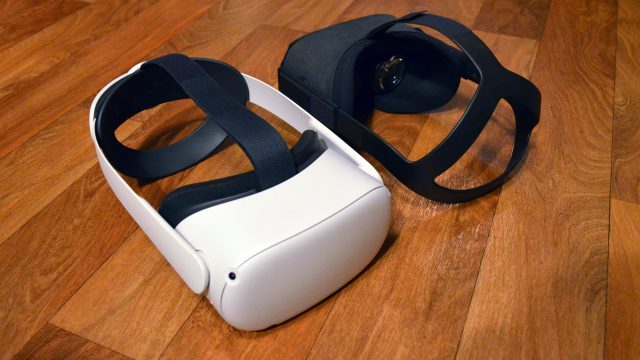“The True Starting Point of Modern VR”

Speaking to Unger, one question on my mind was whether or not the studio’s newfound success was largely the result of a short-lived Quest hype wave, or if there’s sustainable momentum behind VR’s growth. He believes it’s the latter, and thinks the momentum is so significant that it will draw other big headset makers into the market.
“I don’t feel [that this is just a Quest hype wave] because I know that the hardware is doing the right things for consumers. Not just the hardware, but how the hardware interacts with the software. And I can see this being a kind of prototypical example for other big corporations about how to approach VR as a market,” Unger said. “So I really believe that this is kind of the tipping point that will [cause consumer electronics companies] […] to go ‘oh shit, there’s actually money to be made here’. This really is kind of the true starting point of modern VR. So I think competitors are going to start entering this market. I also think that a number of AAA studios are eyeballing the market in a more serious way.”
As for game developers who have been glancing at VR, Unger says that now truly is the moment to jump in.
“[…] I’m putting my neck on the line here by saying this—having been in the industry as long as we have, I really believe we’ve crossed a threshold that makes it safe to start putting investments in VR. Like legitimately safe. You’re going to get a return, especially if you’re a studio that knows what you’re doing and you know you can put something relevant [onto the market],” Unger said. “Now is the time to start developing because you’d be at least a year out from product—and if you’re building anything more ambitious then you’re going to need at least two years, so you’re already running behind!”
As for Cloudhead, the studio is so confident in its current trajectory that it’s actively investing in its long-term future.
“Pistol Whip has been a huge success. […] We’ve easily surpassed our initial investment, and we fully plan on having a couple more years of really strong [sales] performance. […] One of the things [Pistol Whip’s success means is] that we could start Cloudhead Labs which was something we’ve always wanted to do,” Unger said. “Basically it’s an R&D think tank where we experiment with new VR mechanics and games and ideas. We just throw everything at the wall. We couldn’t really do that before because it requires a dedicated small team always thinking about that stuff. So one of the things that the success of Pistol Whip did for us is that it allowed that for the first time. And we’ve always wanted to be a multi-title studio—we should always be working on the next thing.”
– – — – –
After going all in on VR and weathering a storm that brought the studio uncomfortably close to closure, one sign, perhaps more than any other, shows the wind now in Cloudhead’s sails—they’re hiring.







